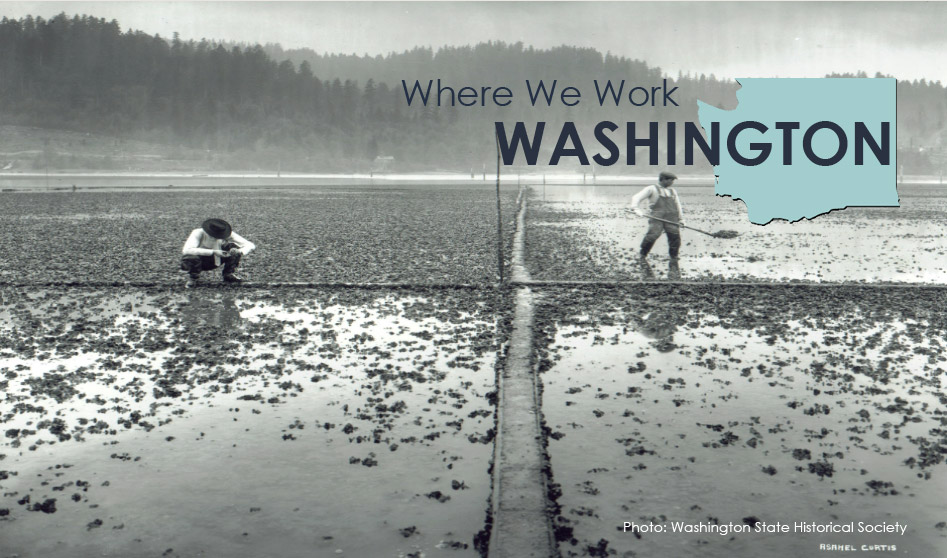Shellfish production on both private and public lands has had a long and vibrant history in Washington State. since the 1860's and extensive estuarine areas in the state are currently used for commercial cultivation of oysters, clams, and mussels. Shellfish aquaculture plays an increasingly important role in domestic seafood production: Washington State is the largest producer of hatchery-reared and farmed shellfish in the U.S, with more than 300 farms accounting for 25% of the total domestic production by weight and an annual farmgate value exceeding $108 million.
Western Washington Indian tribes have harvested wild shellfish, including oysters and clams from Puget Sound and the coastal areas for thousands of years. Shellfish farming began in the mid-1800s and originally focused on the native Olympia oyster, which was abundant in Willapa Bay and South Puget Sound. In 1895, the Washington State Legislature passed the Bush Act and the Callow Act, which allowed for sale of state-owned tidelands into private ownership and further bolstered aquaculture in the state. The Olympia oyster industry reached its peak in the 1890s and then abruptly crashed due to over harvest and declining water quality conditions. By 1915, Olympia oyster harvest was almost non-existent in Puget Sound. Today, Olympia oysters are a priority species for restoration efforts.
Looking to find a replacement for the struggling Olympia oyster industry, in the 1920s, the Washington aquaculture industry began experimenting with the Japanese Pacific oyster and found that it was resilient and grew well in Puget Sound waters. However, natural reproduction of the species is not reliable in Puget Sound so growers had to import young oysters (seed) from Japan. In the 1970s, methods were developed to produce shellfish seed in hatcheries, which increased the availability of shellfish for aquaculture throughout the region. Prior to this, shellfish growers were completely dependent upon natural reproduction or imported Pacific oyster seed from Japan. In the 1970s, methods were developed to produce shellfish seed in hatcheries, which increased the availability of shellfish for aquaculture throughout the region. Prior to this, shellfish growers were completely dependent upon natural reproduction or imported Pacific oyster seed from Japan. Today, a number of species of oyster are raised on Washington tidelands including Kumamoto, Virginica and the native Olympia oyster, however, the Pacific oyster remains the most important and widely cultivated oyster in Washington and along the West Coast. Other commercially important bivalve species have developed over the years. These include mussels, Manila clams, softshell clams, and native geoduck clams.
Recreational harvest of shellfish has long been a popular activity in Washington. In 2011, roughly 347,000 recreational fishing/shellfishing licenses were purchased in the state. Today, popular sport fisheries exist for mussels, oysters, cockles, and a variaty of clams inlcuding razor, geoduck, Manila, native littlenecks, and butter clams. Harvest of native Olympia oysters is prohibited in all West Coast states due to declining populations.
Building off the National Oceanic and Atmospheric Administration's (NOAA) National Shellfish Initiative, Washington State has also introduced its own Shellfish Initiative to promote shellfish as an important resource for jobs, industry, citizens and tribes. According to the Pacific Coast Shellfish Growers Association (PCSGA), "the initiative supports Governor Gregoire's goal of a "dig-able" Puget Sound by 2020, and encompasses the extraordinary value of shellfish resources on the coast." Learn more about the Washington State Shellfish Initiative...
WASHINGTON: Recent PSI Research and Outreach |
|
|
|
|
|
|
|
|
|













